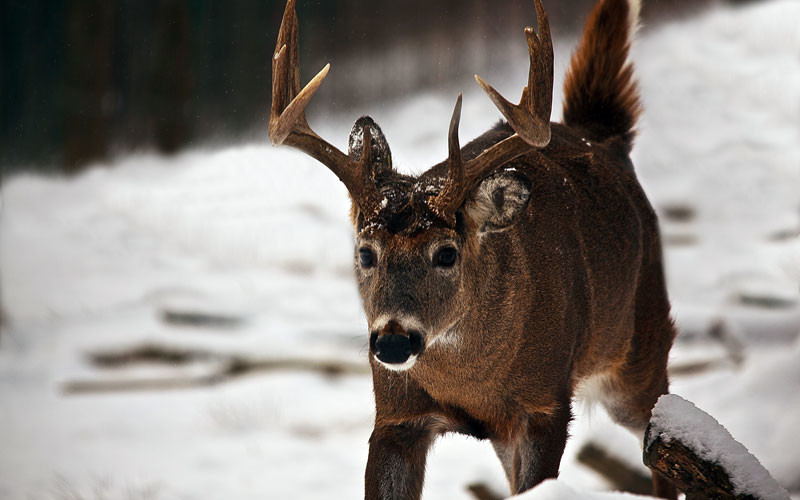Do you want to hunt the deer quickly? First,you must find them out.These three stand set-ups can be employed across much of the whitetail’s range. Try them this month on the land you hunt.Hope these deer hunting tips can help ypu a lot.
The Big Woods Funnel
As the sun rises, deer move back from open fields and food plots [A] into the cover of the big woods. Does head for secluded bedding areas [B], but bucks spend most of the day traveling from one doe group to another, searching for a hot female. Experience has taught them not only where the does like to hang out, but the safest and most efficient way to travel between bedding areas.
There’s no shortage of cover in the big woods, so topography takes on great importance. Study topo maps and look not just for places where deer want to go, but for places where they have to go. The steeper a ridge [C], the less likely deer are to climb it, opting instead to travel parallel to it. Deer are great swimmers, but they’ll more often follow the edge of water [D] than cross it. Furthermore, logistical and legal constraints make timber cutting difficult or impossible along waterways and lake/pond margins, so they’re often choked with the extra-thick cover deer prefer to travel in during daylight. Be prepared to sit this stand [E] all day long.
The Afternoon Plot
During the rut, bucks constantly search for does, and you should do the same. In the afternoon they’ll be converging on concentrated food sources, like food plots [A]. While a young buck might burst into the open chasing does during the peak of the rut, a mature buck will hold back and observe the proceedings. Over the course of the four-plus hunting seasons he’s spent in the woods, he’s learned that all he has to do is stroll downwind of the plot. Here, in the safety and concealment of the adjacent woodlot, he can scent-check every doe in the field without exposing himself to potential danger [B].
In order to put yourself in position for a shot at the mature buck, back off the field, far enough to be downwind of not only the plot, but also the buck trail [C]. How far away you set up will depend on local conditions and what you’re hunting with. Also look for some type of obstacle or constriction, like a field corner, fence line, stone wall [D], or sudden change in topography that might funnel a buck past your stand.
The Windrow
The farm country landscape is radically different from that of the big woods. Dense daytime bedding cover typically exists only in small patches surrounded by open pastures or crop fields [A]. But just like their woodland brethren, cropland bucks are intently seeking does; and while they may seem foolhardy at times, they still seek cover where they can travel during daylight and feel comfortable. In agricultural areas, this usually means windrows [B], stream corridors or other small strips of timber connecting larger blocks, especially between bedding and feeding areas.
Brushy hedgerows that lack good stand trees can still be hunted from ground blinds. It’s a good idea to get your blinds in well ahead of when you plan to hunt so deer can get accustomed to them. It also helps to brush them in as much as possible. Be particularly mindful of the wind when setting up, and later when approaching your blind. Also, try not to walk on or across trails the deer will be using to pass your ambush site.
